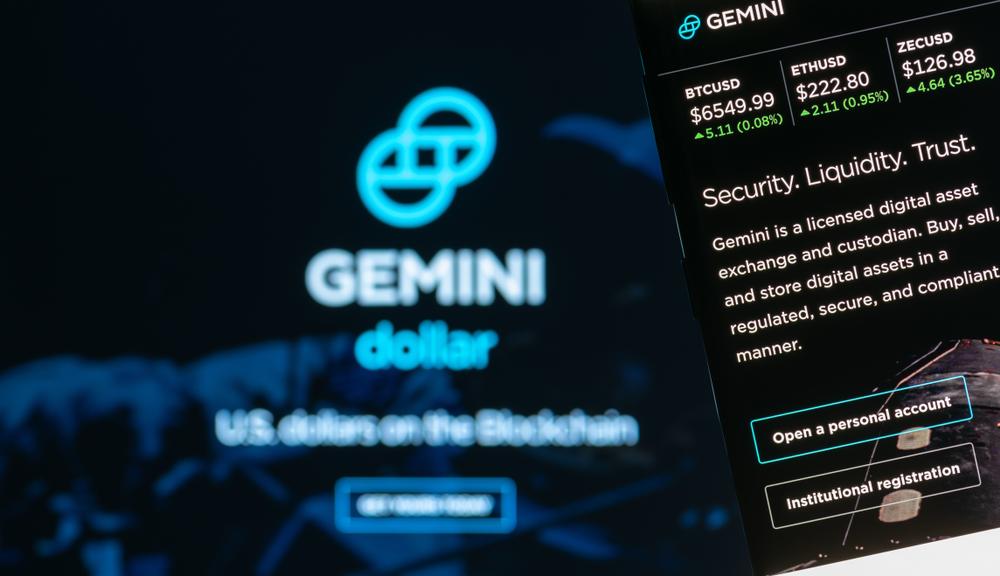What is Gemini Dolllar (GUSD)?
Stablecoins were one of the big trends in the second part of 2018. While for a long time Tether (USDT) was the only significant stablecoin offered by major cryptocurrency exchanges, many new stablecoins emerged in 2018.
One of these coins was the Gemini Dollar, GUSD, which is supposed to push from its throne with the controversial market leader Tether (USDT). The Gemini Dollar was launched on the same day as the Paxos Standard Token (PAX) on September 10, 2018.
The Gemini Dollar was issued by the Gemini Trust Company, LLC, a New York trust company, which also operates the Gemini cryptocurrency exchange. Behind the company are the Winklevoss twins, Cameron and Tyler, who became known through a legal dispute with Facebook founder and former fellow student Mark Zuckerberg on the charge that he had stolen the idea for Facebook from ConnectU (the social network of the Winklevoss brothers developed at that time). The legal dispute ended with a settlement payment by Zuckerberg to the Winklevoss brothers in the amount of USD 65 million, who invested a large part of these assets in Bitcoin and also founded Gemini Trust Company in 2014.
The official website refers to the Gemini Dollar as “the very first regulated stablecoin that is linked to the US Dollar under full recognition of the US regulatory authorities”. However, GUSD must share this title with PAX, which was launched on the same day and also has full regulation.
The US dollars equivalent to the Gemini Dollars issued and outstanding are held at a bank in the United States and qualify for pass-through FDIC deposit insurance subject to applicable restrictions. In addition, the US dollar deposit base is reviewed monthly by BPM, LLP, a registered accounting firm, to determine the reserves and their peg to the US dollar at a ratio of 1:1. All reports of the independent auditors are publicly available.
Like the Paxos Standard Token (PAX), the Gemini Dollar is based on the Ethereum network according to the ERC20 standard for tokens. The Smart Contracts underlying the Gemini Dollar token have been fully audited and formally verified by an independent security firm, Trail of Bits, Inc. whose report is publicly available.
The controversy over code base
As the Gemini Dollar whitepaper shows, the Winklevoss stable coin definitely has some centralized features that were strongly criticized by the crypto community at the time of release. Analysts who examined the code base of the GUSD found that Gemini has the ability to print an infinite number of tokens, make all tokens non-transferable, and freeze accounts. In addition, Gemini had the power to change the implementation of the token every 48 hours.
In comparison to other stablecoins, however, these arguments have to be seen in relative terms, since the above-mentioned possibilities are typical features of stablecoins (which basically contradict the ideology of cryptocurrencies). The companies behind the Stablecoins must comply with regulatory guidelines (e.g. anti-money laundering guidelines).
Why are the targets of the Gemini Dollar?
As Cameron Winklevoss stressed in his blog post on the Gemini Dollar release on September 10, there is a functional gap between Fiat money and cryptocurrencies. Cryptocurrencies can be transferred around the clock and almost in real time, while centralized Fiat currencies are linked to banks’ business hours.
The Gemini Dollar is trying to fill this gap. The GUSD is intended to be an alternative for people who are deterred by the volatility of crypto markets. The aim of the Winklevoss brothers is for the Gemini Dollar to become “a crucial link between the traditional banking system and the new, fast-growing crypto economy”.
Bottom line
The Gemini dollar will have to compete against other newcomers, as well as against the market leader Tether (USDT). Since its release in September 2018, the Gemini dollar has already been quoted on a variety of stock exchanges. The market capitalization of the coin has risen from around 14 million dollars to over 86 million dollars (as of 14 January 2019). Nevertheless, four other stable coins, Tether (USD 1.9 billion), USD Coin (USD 373 million), TrueUSD (USD 205 million) and Paxos (USD 134 million), are ahead of GUSD in terms of market capitalization.
Given the strong competition, it is therefore difficult to say whether GUSD will prevail in the long term. If it turns out to be more transparent than a tether, however, it could gain increased acceptance and use.


